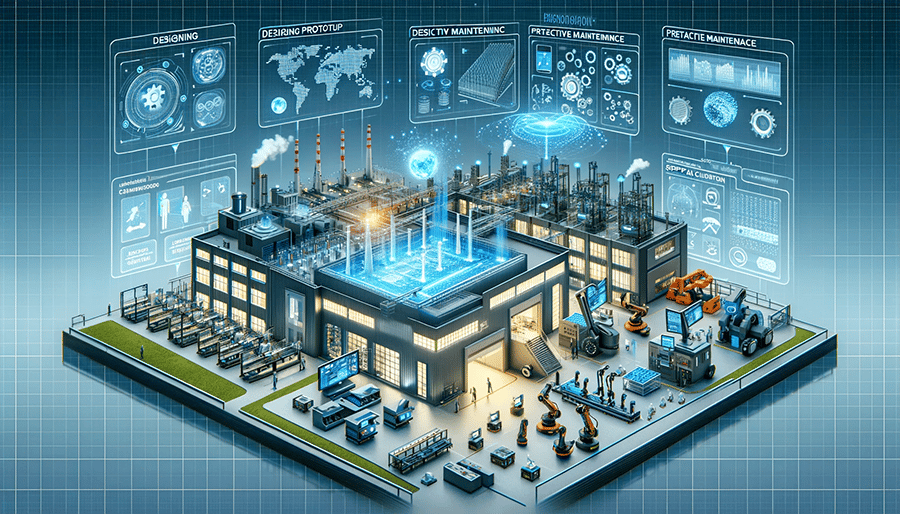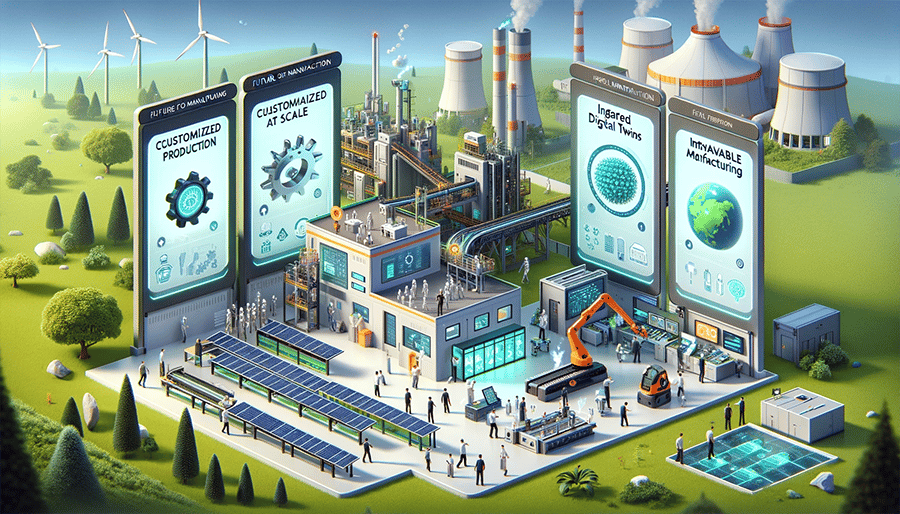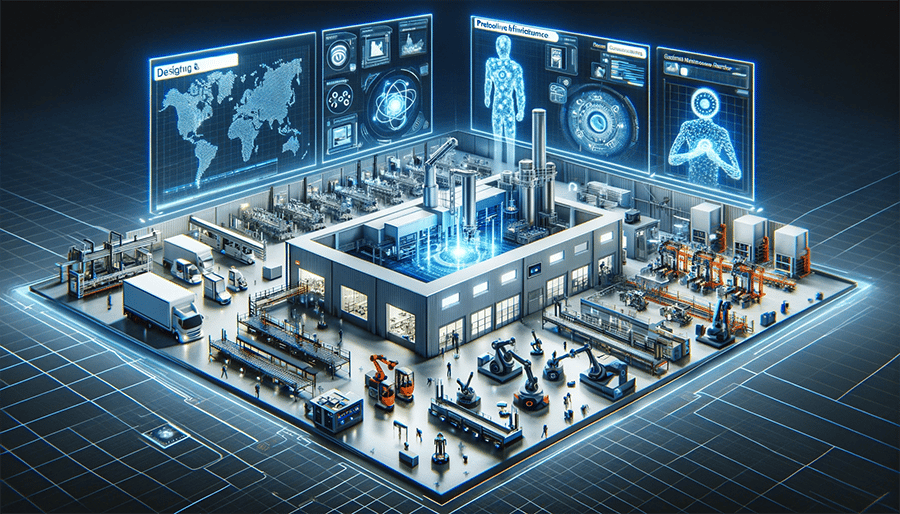Generative AI in Manufacturing Today

- Design and Prototyping: Generative AI is revolutionizing product design and development by accelerating prototype development. By inputting parameters and requirements, manufacturers can quickly generate multiple designs that meet specific criteria and explore options that human designers may not have considered.
- Predictive Maintenance: By analyzing sensor and machine data, generative AI can predict when equipment will likely fail or need maintenance. This predictive capability ensures timely interventions, reducing downtime and maintenance costs.
- Supply-Chain Optimization: By analyzing massive amounts of data, generative AI can produce forecasts and recommendations for inventory management, logistics, and procurement, ensuring that the supply chain is as efficient and resilient as possible. This will enable companies to adapt to market changes and disruptions more rapidly.

The Future of Generative AI in Manufacturing
As manufacturers climb the generative AI learning curve, it will completely redefine the industry’s future. Here are a few emerging applications that will likely become common soon.
- Customized Production at Scale: One of the most promising applications of this technology in manufacturing is using generative AI to design unique products that cater to individual preferences without sacrificing the efficiency typically associated with mass production. As a result, manufacturers will be able to offer a wider variety of products, capturing niche markets that previously weren’t economically feasible to develop.
- Integrated Digital Twins: While digital twins — virtual replicas of physical systems — are already being employed in manufacturing to some degree, there’s much more ahead. By integrating generative AI, digital twins can be used for simulation and analysis of current operations and to generate optimal configurations and guidance in response to changing conditions, leading to more resilient and adaptable manufacturing systems.
- Sustainable Manufacturing: Sustainability is a growing priority for manufacturers. Generative AI can help companies meet their sustainability goals by optimizing resource usage and reducing waste in production processes. The technology can also be used to develop new materials and processes that are more environmentally friendly.
Applying lessons from Manufacturing to your industry
Generative AI is still in its infancy. However, the lessons learned from generative AI applications in manufacturing today can be applied across many industry sectors.
Embracing generative AI is now imperative for business leaders aiming to navigate the complexities of the digital era and secure a competitive edge in the global marketplace. It’s time to imagine what’s possible when you bring generative AI into your organization to solve problems, drive innovation, and streamline operations. The results can indeed be transformative.
In our next post, we’ll explain Mactores's proprietary process for helping clients execute generative AI initiatives effectively and efficiently.



